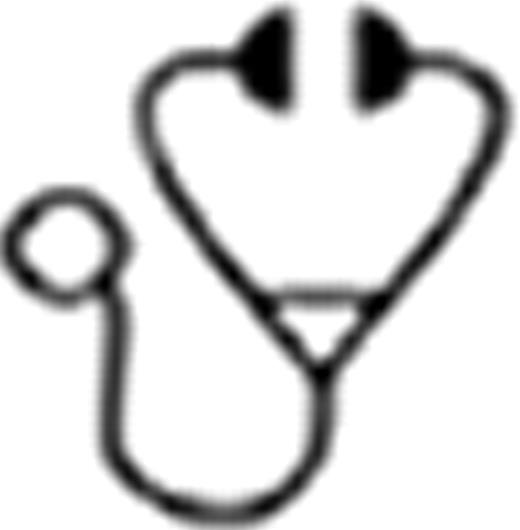Abstract
Abstract  290
290
In CLL unmutated immunoglobulin heavy chain (IGH) genes, deletions of chromosome 17p or 11q and trisomy 12 are associated with an unfavorable outcome. At the outset of the present trial, phase II studies had shown promising results of immunochemotherapy with FC + rituximab, but the optimal immunochemotherapy regimen was not known, especially not for high-risk CLL patients. The aim of this trial was to improve the outcome of high-risk CLL by the addition of the monoclonal antibody alemtuzumab to the currently best known chemotherapy FC. Because of the recognized immunosuppressant activity of both treatment modalities, a low-dose alemtuzumab approach was chosen and vigilance and prophylaxis towards infection upheld throughout the study.
Patients and methods: Previously untreated, fit patients up to 75 years of age with high-risk CLL in need of treatment according to the NCI/IWCLL guidelines were randomized to either oral FC (F 40 mg/m2 D1-3 and C 250 mg/m2 D1-3) or AFC: oral FC + subcutaneous (sc.) alemtuzumab 30 mg, in cycle 1 day -1 to +1, in cycles 2–6 30 mg day 1 only. Responses and endpoints were defined according to NCI/IWCLL guidelines. The primary endpoint was progression-free survival (PFS) on intent-to-treat with progression defined as no response after three cycles of induction treatment, progression of disease, relapse or death whichever occurred first. Secondary endpoints included the rate of complete remission (CR) and the rate of MRD – negative CR (by PCR or flow cytometry), overall survival (OS) and toxicity. We assumed that the addition of alemtuzumab to FC could increase the CR rate from the estimated 20% to 40% and the median PFS from 30 to 42 months.
The study population of 281 patients was included 2006–2010. As of July 2011 262 patients (93%) were evaluable, 129 in the AFC arm and 133 in the FC arm with a median follow-up of 30 months (range 2–63 months). The median age was 60 years (range 27–75) and 75% were males. Twelve % had Binet stage A, 54% stage B and 34% stage C. Beta-2-microglobulin was increased in the majority of the patients (median 3.7 g/ml). Eighty-nine % had unmutated IGH genes and FISH revealed 27% with del11q, 18% with trisomy 12 and 11% with del17p according to the hierarchical model. All risk parameters were well balanced between the two arms. Sixty-three% completed all six cycles in each arm, 73% completed at least 5 cýcles AFC while 66% completed 5 cycles FC.
The overall response to AFC and FC was 88% and 80% respectively (NS), the CR rates were 57% and 45% respectively (P=0.049), and the rates of MRD-negative CR were 29% and 17% respectively (P<0.02. The median PFS following AFC and FC was 37 and 31 months respectively (P=0.08). The median OS has not been reached. In the subgroups with 17p deletions, 11q deletions, trisomy 12 or unmutated IGH genes a trend of improved PFS following AFC was seen, but this did not reach significance due to small numbers. There were no differences in response or PFS between treatment arms according to Binet stage or beta-2-microglobulin level.
Severe adverse events, mostly grade 3, were significantly more frequent following AFC than FC: 145 vs 90 (P<0.0001), including flu-like syndrome due to the antibody (27 vs. 2), opportunistic infections (25 vs 11), and organ affection (34 vs 14). The numbers of neutropenic and other infections did not differ. Six treatment related deaths were reported in each arm to a total treatment related mortality of 4%.
In this selected high-risk CLL population, the addition of low-dose sc. alemtuzumab to FC induced a higher rate and higher quality of complete remission than FC alone, which, however, in this early analysis, did not yet translate into significantly prolonged PFS or OS. As expected, the combination is more immuno-suppressant than chemotherapy alone, leading to a higher number of opportunistic infections. With proper vigilance and prophylactic measures, these infections were manageable and did not lead to any excess mortality.
The members of the Data Management and safety Board, Peter Hillmen, Stephan Stilgenbauer and Harald Anderson are thanked for their advice. The NovoNordisk Foundation, The Danish Cancer Society and Genzyme Corporation are thanked for research support.
Geisler:Roche: Consultancy; Genzyme: Research Funding; Celgene: Consultancy; GSK: Consultancy. Walewski:4SC AG: Consultancy.
Author notes
Asterisk with author names denotes non-ASH members.

This icon denotes a clinically relevant abstract

